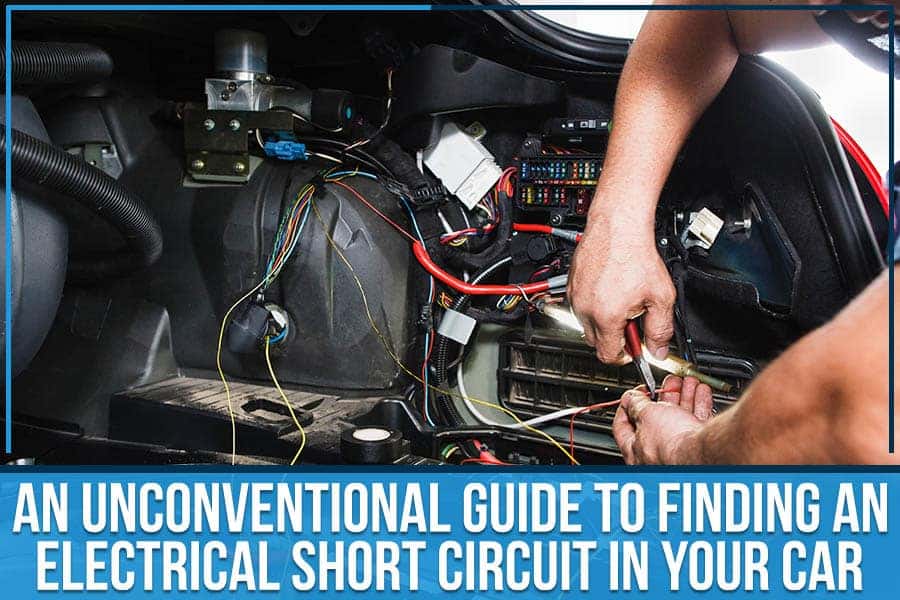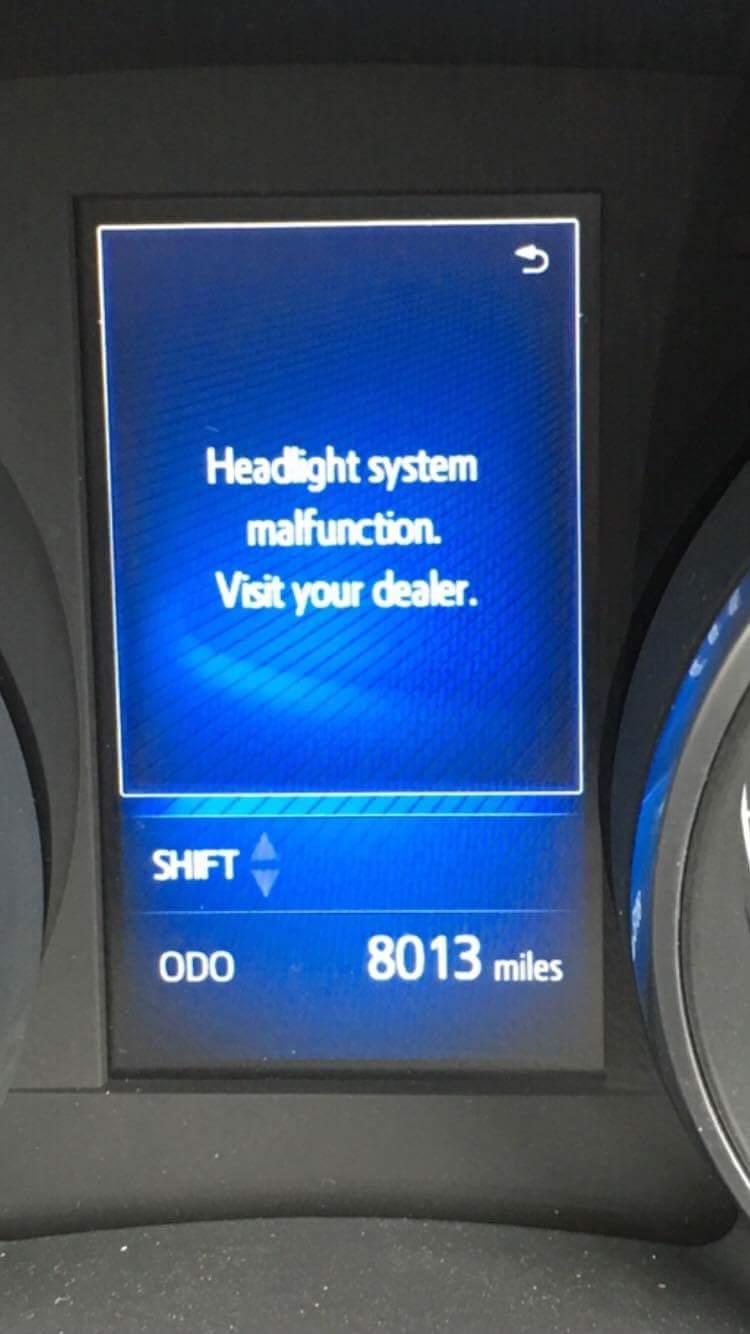The Toyota headlight system may malfunction and require troubleshooting or replacement. Proper functioning of the headlight system is essential for road safety and visibility during night driving or adverse weather conditions.
We will explore common causes of headlight malfunctions in Toyota vehicles, such as blown bulbs, faulty wiring, or issues with the headlight switch. We will discuss symptoms indicating a malfunction, steps to diagnose the problem, and possible solutions for resolving the issue.
Understanding the potential problems and troubleshooting steps can help Toyota owners ensure their headlight system operates effectively and responsibly. Stay tuned to learn more about addressing headlight system malfunctions in your Toyota vehicle.

Credit: www.scottrobinsonhonda.com
Common Headlight System Issues
As a Toyota owner, it’s crucial to understand common headlight system issues to ensure your safety on the road. Dim or flickering lights and uneven headlight beams are some of the typical problems that you might encounter. These issues can affect your visibility and compromise the illumination of the road ahead, especially during nighttime or adverse weather conditions. In this section, we will discuss each of these issues and provide some insights on how to address them effectively.
Dim Or Flickering Lights
Dim or flickering lights can be quite frustrating and pose a serious hazard on the road. There are several possible causes for this issue:
- Faulty Bulbs: This is the most common reason for dim or flickering lights. Check your bulbs regularly to ensure they are functioning correctly. If you notice any signs of damage or discoloration, it’s time to replace them.
- Battery or Electrical Problems: A weak or dying battery or electrical issues can affect the power supply to the headlights, resulting in dim or flickering lights. Consult a professional to properly diagnose and fix any battery or electrical problems.
- Wiring Problems: Damaged or loose wiring connections can also lead to dim or flickering lights. Inspect the wiring harness and connections for any signs of wear or looseness. If necessary, repair or replace the affected components.
- Alternator Issues: A malfunctioning alternator can contribute to dim or flickering lights. The alternator is responsible for charging the battery, so if it is not functioning properly, it can adversely affect the headlights. Seek professional assistance to diagnose and rectify any alternator problems.
Uneven Headlight Beam
An uneven headlight beam can significantly reduce your visibility, making it difficult to see the road ahead and potentially blinding other drivers. Here are some possible causes for this issue:
- Misaligned Headlights: Over time, your headlights may become misaligned due to normal wear and tear or improper installation. A misaligned headlight can cause the beam to point too high or too low, resulting in an uneven distribution of light. Get your headlights properly aligned by a trained technician to ensure optimal visibility.
- Faulty Adjusters: The adjusters in the headlight assembly allow you to modify the aim of the lights. If these adjusters are damaged or malfunctioning, they can cause an uneven beam. Consider replacing the faulty adjusters to restore the proper alignment of your headlights.
- Dirty or Cloudy Headlight Covers: Dirty or cloudy headlight covers can obstruct the light output and create an uneven beam. Regularly clean and polish the headlight covers to maximize the effectiveness of your headlights.
It’s important to address any headlight system issues promptly to ensure your safety on the road. If you are unsure about diagnosing or fixing these problems, it’s best to consult a professional Toyota technician who can provide expert assistance and ensure that your headlights are in optimal working condition.
Causes Of Headlight System Malfunction
The causes of headlight system malfunction in Toyota vehicles can vary from electrical issues to faulty bulbs or wiring. Common culprits include blown fuses, wiring corrosion, or a malfunctioning switch. Regular maintenance and prompt bulb replacements can help prevent these issues and ensure your headlight system functions optimally.
Faulty Bulbs Or Wiring
Faulty bulbs or wiring can be a common cause of headlight system malfunction in Toyota vehicles. When the bulbs in the headlight assembly become damaged or burn out, it can result in reduced visibility during nighttime driving or in low-light conditions. Additionally, wiring issues such as frayed or damaged wires can lead to intermittent or complete failure of the headlights. These problems can be particularly dangerous as they can lead to accidents or traffic violations.Issues With Headlight Control Module
Another possible cause of headlight system malfunction in Toyota cars is a faulty headlight control module. The headlight control module is responsible for managing the operation of the headlights, including turning them on and off, as well as controlling their intensity. If the control module malfunctions, it can cause issues with the functioning of the headlights. This may result in the headlights not turning on at all, only working intermittently, or not adjusting properly, leading to reduced visibility. It is important to note that diagnosing the exact cause of a headlight system malfunction in Toyota vehicles can be complicated, and it is recommended to consult a professional mechanic for an accurate diagnosis and repair. Troubleshooting the problem through visual inspection of the bulbs and wiring may be a good starting point, but to ensure a proper fix without damaging any other components, professional intervention should be sought. In conclusion, common causes of headlight system malfunction in Toyota vehicles include faulty bulbs or wiring and issues with the headlight control module. These problems can result in reduced visibility and potential safety hazards. Seeking professional assistance for diagnosis and repair is strongly advised to ensure a safe and reliable headlight system in your Toyota car.Troubleshooting Techniques
A malfunctioning headlight system in your Toyota can be frustrating and potentially dangerous. However, troubleshooting the issue doesn’t have to be a complex task. By following a few simple techniques, you can quickly identify and resolve the problem. In this article, we will explore two common troubleshooting methods: Replacing Bulbs and Fuses, and Checking Electrical Connections.
Replacing Bulbs And Fuses
When your headlight bulbs cease to function, it can be due to a burned-out bulb or a blown fuse. Replacing the bulbs and fuses is an essential troubleshooting step and can often resolve the issue without any further complication.
Procedure:
- First, ensure you have the correct replacement bulbs for your Toyota model. Consult your owner’s manual or the manufacturer’s website to obtain the correct specifications.
- Open the hood and locate the headlight assembly. Unscrew the retaining ring and carefully remove the bulb socket.
- Replace the old bulb with the new one, ensuring it is securely seated in the socket. Be cautious not to touch the glass portion of the bulb with bare hands, as this can reduce its lifespan.
- If replacing the bulb doesn’t solve the issue, the next step is to check the fuses. Locate the fuse box, usually situated under the hood or beneath the dashboard.
- Refer to your owner’s manual to identify the specific fuse responsible for the headlight system. Inspect the fuse for any signs of a burn-out or damage.
- If the fuse is blown, replace it with a new fuse of the same amperage rating and test the headlights.
Checking Electrical Connections
Another common cause of headlight system malfunction is loose or faulty electrical connections. By inspecting the connections, you can identify any issues and address them accordingly.
Procedure:
- With the hood opened, locate the headlight wiring harness. This harness connects the bulbs to the vehicle’s electrical system.
- Carefully examine the connectors for any signs of corrosion, dirt, or loose wiring.
- If you find corrosion or dirt, clean the connectors using a contact cleaner and a soft cloth. Ensure the connectors are dry before reattaching them.
- For loose wiring, gently secure the connectors and ensure they are tightly fastened.
- Once the connections are cleaned and secured, test the headlights to check if the problem has been resolved.
Remember, if these troubleshooting techniques do not resolve the issue, it is advisable to consult a professional mechanic or Toyota service center for further assistance. Proper maintenance of your vehicle’s headlight system ensures your safety on the road, so don’t delay in addressing any malfunctioning headlights.

Credit: www.amazon.com
Routine Maintenance Tips
Keeping your headlight system in top condition is essential for safe and efficient driving. By regularly performing routine maintenance, you can ensure that your Toyota’s headlights are functioning optimally. In this section, we will provide you with some simple yet effective tips to keep your headlight system in top shape.
Cleaning Headlight Lenses
Over time, the lenses of your headlights can become cloudy or yellowed, which can reduce their effectiveness and visibility. Regularly cleaning your headlight lenses can help to restore their clarity and brightness.
Here are some steps to clean your headlight lenses:
- Gather a bucket of warm, soapy water and a soft sponge.
- Thoroughly wet the sponge and gently scrub the lenses in a circular motion.
- Rinse the lenses with clean water and dry them using a microfiber cloth.
- Apply a specialized headlight restoration kit, following the manufacturer’s instructions, if necessary.
Regularly cleaning your headlight lenses not only improves visibility but also enhances the overall appearance of your vehicle.
Inspecting Light Alignment
Proper alignment of your headlights is crucial for ensuring optimal visibility while driving. It is important to regularly inspect the alignment of your lights to avoid any potential issues.
Here’s how you can inspect the alignment of your headlights:
- Find a level surface and park your Toyota approximately 25 feet away from a wall or garage door.
- Turn on your headlights and note the position of the light beams on the wall. They should be positioned at the same height and parallel to each other.
- If you notice that one or both light beams are misaligned, consult your vehicle’s owner’s manual for instructions on how to adjust them. Alternatively, you can seek professional assistance.
Properly aligned headlights not only enhance visibility but also ensure the safety of both you and other drivers on the road.
Importance Of Addressing Headlight Issues
Headlights are an indispensable part of a vehicle’s safety features. Properly functioning headlights are crucial for ensuring the safety of both the driver and others on the road. Ignoring headlight issues can lead to compromised nighttime visibility and increase the risk of accidents. It’s vital to address any malfunction in the headlight system promptly to prevent potential hazards.
Enhancing Nighttime Visibility
Properly functioning headlights are paramount for enhancing visibility in low-light conditions. Malfunctioning headlights can significantly reduce the driver’s ability to see the road, obstacles, or pedestrians, leading to an increased risk of collisions. Addressing headlight issues promptly is essential to ensure optimal visibility during nighttime driving.
Ensuring Road Safety
Addressing headlight issues is crucial for maintaining road safety for both the driver and other road users. Malfunctioning headlights can make it difficult for other drivers to see your vehicle, potentially causing confusion and leading to accidents. By promptly fixing headlight system malfunctions, you contribute to the overall safety of the road and help prevent potential collisions.

Credit: www.toyotaownersclub.com
Conclusion
To ensure your Toyota headlight system functions flawlessly, be diligent in conducting regular maintenance and addressing any malfunctions promptly. This includes checking bulbs, fuses, and connections regularly. Remember to consult the vehicle’s manual for specific instructions. A safe and well-lit driving experience is vital for your safety and the safety of others on the road.
Stay proactive and stay safe.

